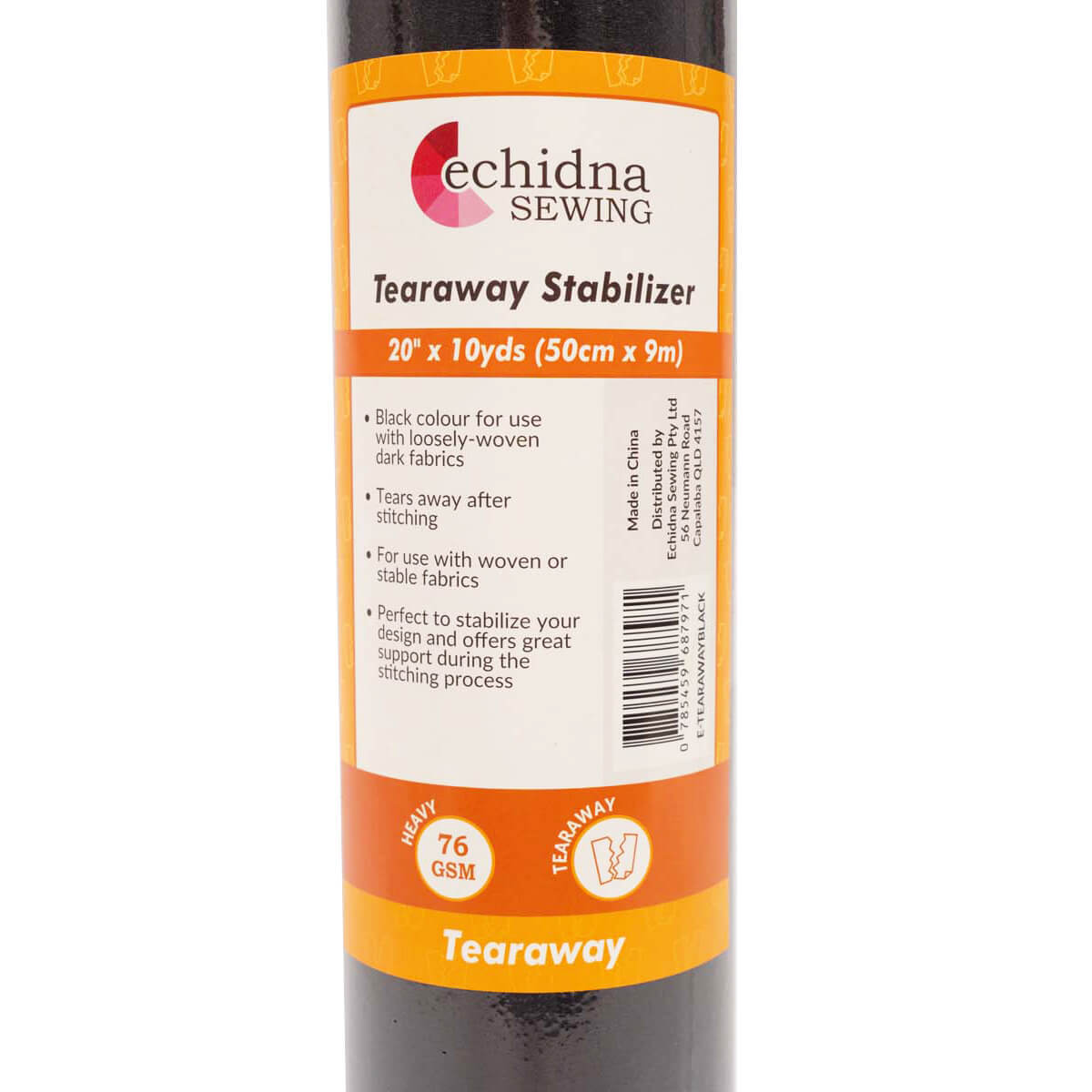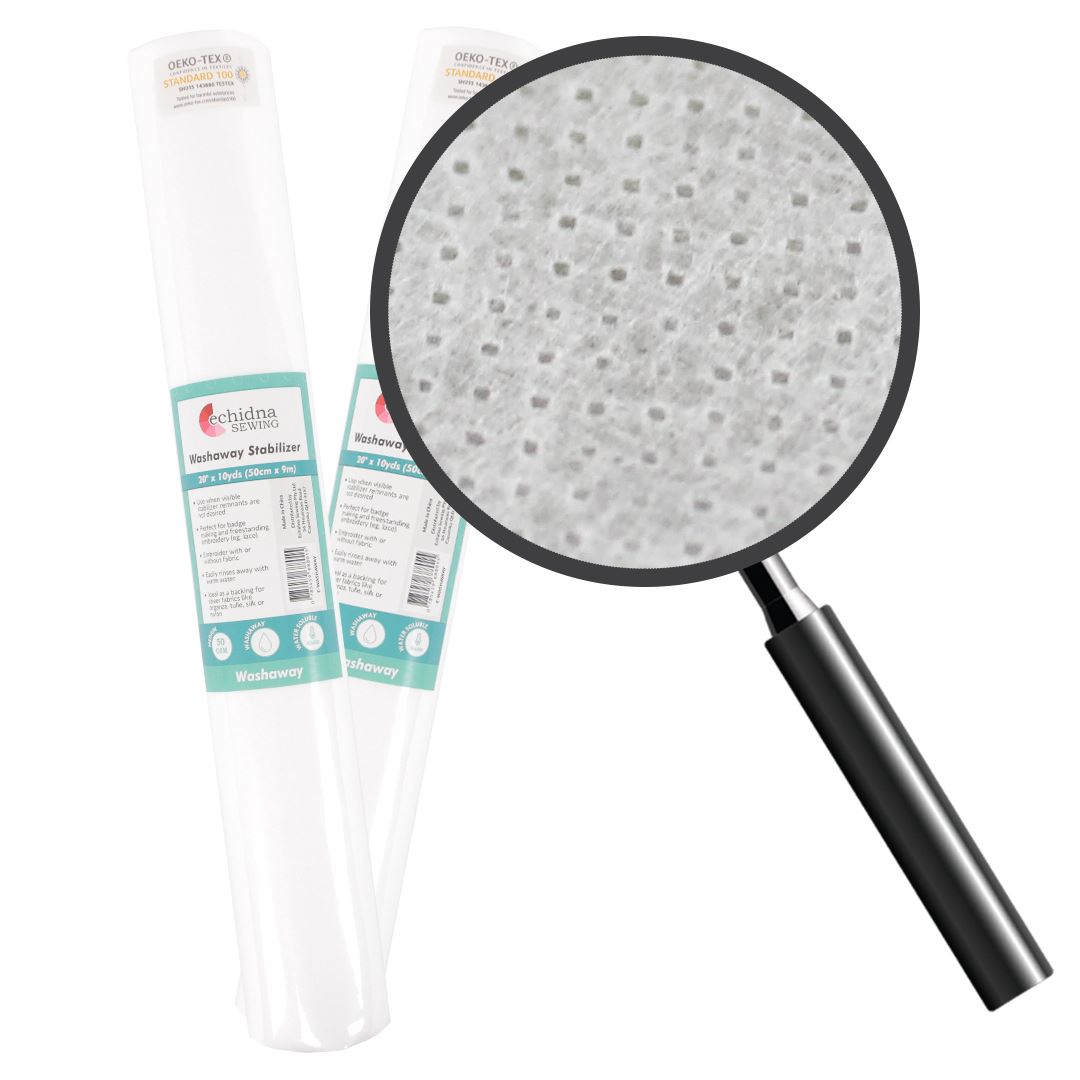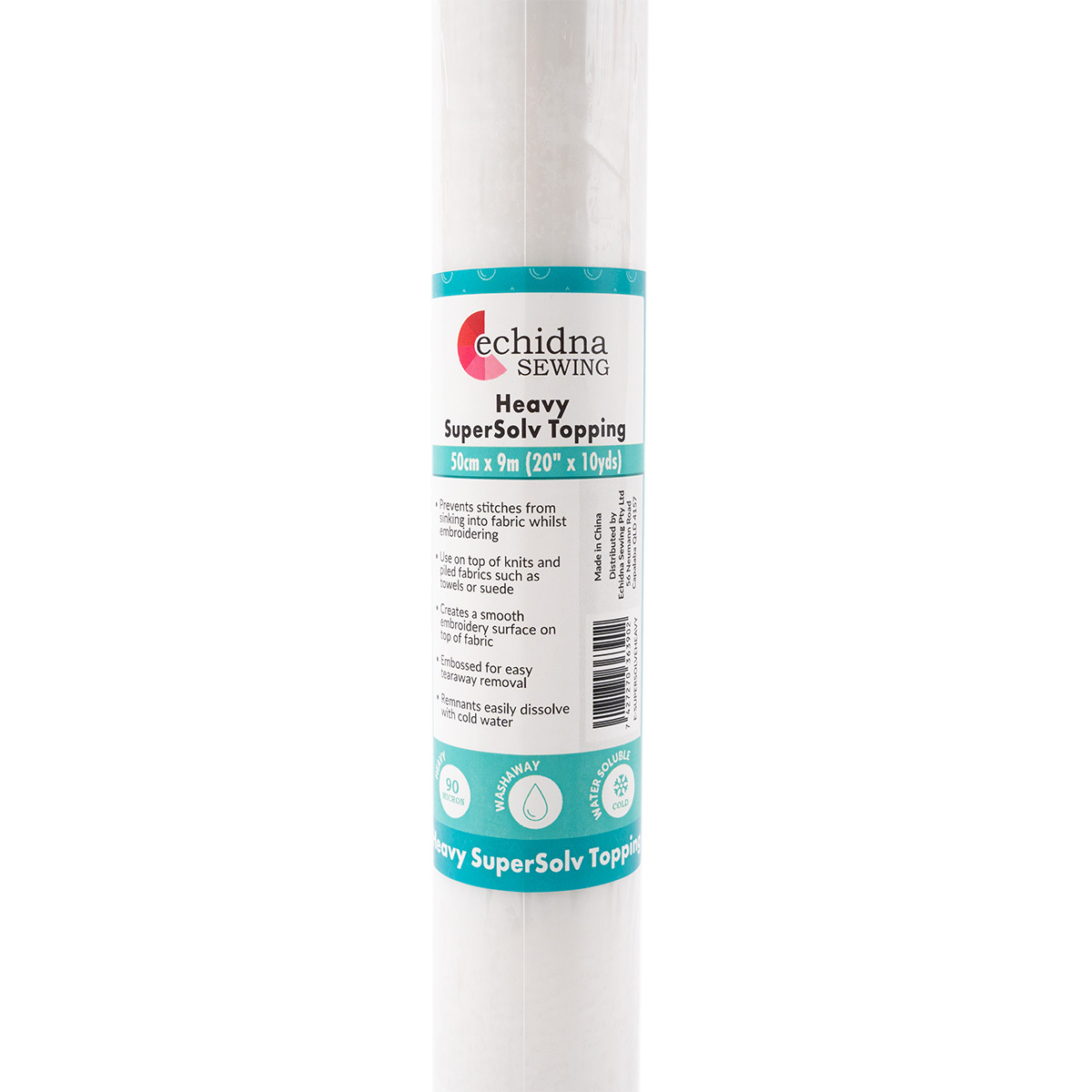Your guide to embroidery stabilizers and backings
Date Posted:14 May 2020
Stabilizers are an essential part of machine embroidery. These thin layers of backing material keep your fabric from stretching or puckering during the stitching process.
Knowing which stabilizer to use for your projects is a skill which you can master with practice. In our stabilizer guide below we explain the different stabilizers available, what they're made from and when to use them. We have created a handy stabilizer guide (PDF, 218KB) that you can download and print to make it easier to refer back too.
Softaway (tearaway)
Medium weight - Non-woven polyester, wood pulp, PVA | 55gsm
A softer, lighter tearaway for woven fabrics (e.g. apparel and crafts). Easy to hoop, doesn’t perforate and tears away easily and cleanly. Can be used on knitted fabrics with lower stitch count designs.
Buy 20" x 10yd roll → Buy bulk 25cm x 100m roll →

Fusible Softaway (tearaway)
Medium weight - Non-woven polyester, wood pulp, PVA, olefin | 55gsm
Softaway with an added low-melt-point fusible layer. Ideal for difficult or slippery woven fabrics (e.g. satins, sateens and poplins).
Buy 20" x 10yd roll → Buy bulk 25cm x 100m roll →

Echidna Tearaway – Black
Medium/heavy polyester | 76gsm
A standard commercial style black tearaway offering great support during the stitching process. Will tear away easily. Ideal for dark loosely woven fabrics.
Buy 20” x 10yd roll →
CutAway (Light)
Non-woven polyester | 50gsm
Echidna Light Cutaway stabilizer is ideal for lighter weight knitted or stretch fabrics or when a low to moderate stitch count design is used. Example: a logo on quick-dry polo shirts. Light cutaway prevents stretch and provides stability both during stitching and the life of the finished item.
Buy 25cm x 100m roll →
CutAway (Medium)
Non-woven polyester | 80gsm
The universal stabilizer. Use one layer with medium to heavy stretch or knitted fabrics (e.g. polos and sportswear). Whenever possible, hoop with the garment or for difficult items baste the garment on top of the hooped stabilizer. Trim away the excess backing after stitching. Leaving about ¼ inch around the finished design.

See-through CutAway
Non-woven polyester
A soft cutaway ideal for lightweight, soft drape and semi-transparent fabrics. Very stable, but almost invisible from the right side the fabric. Ideal for in-the-hoop projects and quilt blocks. Trim back close to the stitching on the underside of garments. Our pick for light coloured polo shirts.
20" x 10yd roll (White) → Buy bulk 20" x 50yd roll (White) → Buy 20" x 10yd roll (Black) →

Fusible See-through CutAway
Non-woven polyester, low-melt adhesive
Same as the see-through cutaway but has a fusible low-melt-point resin that easily adheres to the fabric with a medium heat iron to prevent scorching. Best for particularly light weight, slippery types of fabric.

Washaway
Water-soluble non-woven PVA | 50gsm
Supports stitches during embroidery, then completely dissolves in warm water. Ideal for lace, free-standing designs or sheer fabrics. The suggested hooped stabilizer to use when embroidering on toweling. Can be used without fabric for free standing designs..

Supersolv
Cold water-soluble clear PVA film | 35 micron
Holds down the nap of the fabric, preventing stitches from sinking in. Place on top of fabrics like towels, suede, spongy knits and piled fabrics. Tear the excess away and dissolve remnants with water. Can be simply sponged away.

Heavy Supersolv
Cold water-soluble clear PVA film | 90 micron
Ideal to use as a specialised badge film on embroidered badges, delivering crisp, well-defined embroidery results every time. After stitching, simply tear away the excess topping and dissolve any residue with water for a clean, professional look.

Echidna Light Heataway
A clear film used on high pile and textured fabrics to create a smooth surface and prevent stitches from sinking into the fabric. It virtually disappears when heat is applied; a great alternative to water-soluble topping.

Hot melt web
Non-woven polyamide
Clear, iron-on webbing used to bond fabrics together. Perfect for applique and welding craft fabrics to each other. The web-like double-sided glue has paper on one side for heat application. Ideal to use with the ScanNCut.

Hot melt film
Polyolefin film
A clear, heat-set film ironed on to an embroidered design to create a badge, which is then ironed onto fabric. The plastic film-like double-sided glue has paper on one side for heat application. More permanent adhesion than Hot Melt Web.

Stiff Specialty Felt
Available in black or white
This 100% polyester non-woven felt is ideal for machine embroidery projects such as badges, photostitch, home furnishings and can be used for bag making. It provides extra support and flexibility where required.
Buy 50cm x 100cm roll (black) → Buy 50cm x 100cm roll (white) →

Double-sided tape
Clear low-tack or yellow high-tack
Tape used to embroider fabrics without hooping. Apply the 15mm high tack tape around the outer edges of the hooped stabilizer and secure the fabric on top. Be sure to not stitch through the tape or use the 6mm tape on the outer circumference on the inner embroidery hoop ring to prevent hooped fabric from slipping during the embroidery process.

Cover It Up
Soft iron-on interfacing
Iron on to the wrong side of the embroidered design after stitching is complete (with your iron set at a medium temperature). This prevents the “scratchies” which can sometimes cause irritation when wearing embroidered clothing. Particularly for infants and children or when metallic threads have been used.

Crystal Organza
Polyester | Available in Black & White
Crystal organza is ideal to use when stitching 3D embroidery designs such as 3 dimensional flowers, butterflies, Christmas decorations, bookmarks and much more. Excess organza can be burnt away with a soldering iron.

Tulle
Polyester | Available in 3 colours: Black, Cream & White
Use tulle as a stabilizing agent by sandwiching it between two layers of Washaway to give freestanding lace more strength and ensure all the stitches remain regimental after washing. This will keep a more consistent shape and generally ensures a longer life to the work.




